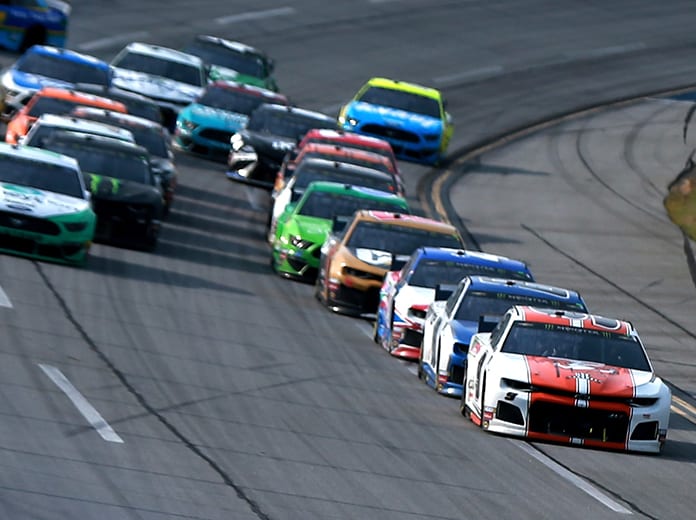
The decision to slow the cars is expected to reduce the likelihood of cars being able to attain lift during incidents like the one Newman was involved in on the final lap of the Daytona 500.
However, NASCAR Senior Director of Safety Engineering John Patalak said Monday that Newman’s car didn’t attain liftoff due to speed or aerodynamics. Instead, it was the impact with the outside wall that launched Newman’s Ford into the air.
“I would say that slowing the cars down surely should and would help from an aero liftoff standpoint,” said NASCAR Senior Director of Safety Engineering John Patalak. “I would say our findings from the Ryan Newman crash, his liftoff was not due to an aero event but from him getting into the wall. The idea there is reducing the speeds of the car, slowing them down. We would expect speeds under the 200-mph barrier here. So from that standpoint slowing the cars down, keep from having as violent wrecks.
“Like I said, I mean, when the checkered flag is out for the Daytona 500, any of our races for that matter, the opportunity for accidents is high. I think the changes you see here that we’ve put forward, it’s to ensure that once a chain of events like that are set into motion, we have all the safety mechanisms in place to mitigate the outcome, negative outcomes, I should say.”
The addition of the slip tape is meant to make it less likely that the second car in a two-car tandem draft can upset the stability of the front car. In the case of Newman’s wreck, he was being pushed by Ryan Blaney and that push led to a decrease in stability to Newman’s car, resulting in Newman losing control and causing the aforementioned incident.
“The way the slip tape works, it reduces the friction between the two surfaces,” Probst said. “It would also be like ice. We’re trying to make the rear bumper of the car being hit like ice, where they slide across, don’t contact and start influencing the car in front laterally, left to right, if you will.”
Patalak added that he believes the slip tape, in addition to the other rule changes, should eliminate tandem drafting. However, he recognizes that crew chiefs will always be looking for new ways to skirt the rule book.
“Right here, right now, sitting here today, I would say that this should eliminate it,” Patalak said. “I also know they will all be working to try and get back to some form of it. I’ve done this long enough to know that I will not make any bold, blanket statements that would challenge them to prove me wrong.
“I think with the reduction in power, the aero ducts going away, that will make sort of a smaller hole, if you will, that should make it much more difficult to get into that configuration.”
While all of these changes will be new when the NASCAR Cup Series rolls into Talladega Superspeedway this weekend, Patalak highlighted some of the safety measures that NASCAR believes saved the lives of Newman and Corey LaJoie, who was also involved in the last-lap crash in the Daytona 500.
“We had new roll bars added in 2013 to the roof and windshield. That was of benefit to both vehicles, the 6 and the 32 (LaJoie), in this crash,” Patalak said. “We had new window net mounting structures required in 2013, as well as the laminate windshield. Those also both benefited the cars.
“I think in 2015 we required all belts to seat, containment seats, with seven‑ or nine‑point restraints. That was a big step,” Patalak continued. “Any time you have a car inverted, the driver’s weight, gravity is pulling against the seat belts. Without that seventh point, that negative G belt, the driver’s body comes out of the seat more. That was in place here.
“Probably the biggest take away from me, looking at it all together, was the enhanced vehicle chassis. That was mandatory at Daytona and Talladega starting in 2016, everywhere else starting last year. When you really look at the two vehicles, how they interacted, the severity and the orientation of it all put together, those couple things really stood out as highlights to the outcome that we had.”
